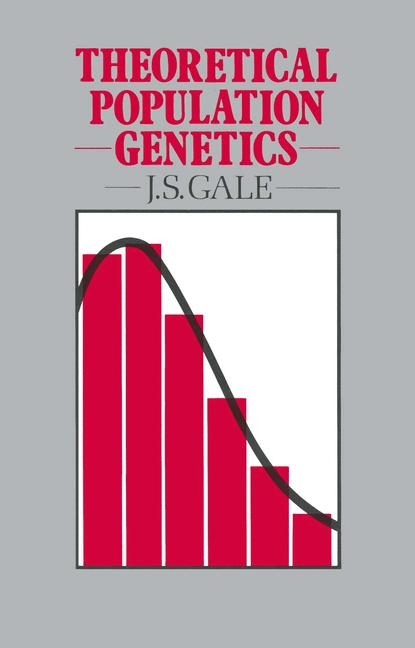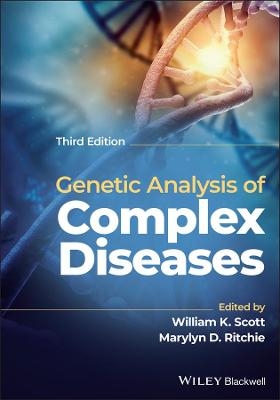
Theoretical Population Genetics
Springer (Verlag)
978-94-010-6660-0 (ISBN)
- Titel wird leider nicht erscheinen
- Artikel merken
1 Introduction.- Notes and exercises.- 2 Wright-Fisher, Moran and other models.- On simple models.- Stochastic models: deterministic models.- Random genetic drift: general approach.- Distribution of allele frequency under drift.- Change of allele frequency in one generation.- The mean in any generation.- Change of allele frequency in one generation: the variance.- Is the binomial distribution of allele number relevant?.- Effective population size.- Variance of allele frequency in any generation.- Inbreeding effective size.- Populations under systematic 'pressure'.- A continuous approximation to the conditional distribution.- Diffusion methods.- Moran's model.- Notes and exercises.- 3 On the description of changes in allele frequency.- A bewildering abundance of descriptions.- Probability distribution of allele frequency.- A numerical example.- Probability of fixation.- Dominant latent root (maximum non-unit eigenvalue).- Modified process.- Probability distribution of absorption time.- Mean absorption time.- Variance of absorption time.- Mean sojourn times.- Variance of sojourn time.- Probability of ever reaching a given frequency.- A matrix representation of mean sojourn time.- Notes and exercises.- 4 Survival of new mutations: branching processes.- On special methods.- Probability of survival.- The need for accuracy.- Are diffusion methods appropriate?.- A fundamental simplification.- Probability generating functions.- Independent propagation: branching processes.- Utility of the branching process approach.- Fundamental equations for branching processes.- Calculating the probability of survival.- The case Ne < N.- A problem in genetic conservation.- Probability of survival when t is fairly large.- Pattern of survival in natural populations.- A caution.- Genie selection.- Probability of ultimate fixation.- Calculating the probability of fixation.- Population subdivision.- Cyclical variation in population size.- A note on epistasis and linkage.- Spread of a fungal pathogen.- Notes and exercises.- 5 Probability of fixation: the more general case.- Fundamental equation.- Uniqueness of the solution.- Probability of fixation for Moran's model.- Moran's method for the Wright-Fisher haploid model.- Population subdivision.- The case Ne < N.- Effect of selection on fixation probability.- Kimura's method for Anding the probability of fixation.- Population subdivision reconsidered.- Fluctuating viabilities.- Rate of evolution.- Notes and exercises.- 6 Some notes on continuous approximations.- The problem stated.- Probability of reaching a given allele frequency.- Events at the boundaries.- The problem of representing the initial frequency.- Ad hoc method.- Objections to our ad hoc method.- Dirac's delta function.- Notes and exercises.- 7 Mean sojourn, absorption and fixation times.- Retrospect.- Fundamental equations.- Uniqueness of solutions.- Mean times for Moran's model.- A tentative approach for the Wright-Fisher model.- A generating function for mean sojourn times.- Calculating mean sojourn times for the Wright-Fisher model.- Mean fixation times.- Continuous approximations.- Calculating mean sojourn and absorption times.- Interpreting the results.- Mean sojourn times in the modified process.- Mean fixation time.- Effect of selection.- Mean times under genie selection in the modified process.- Effect of selection: some results.- Calculation of mean times under selection: a numerical example.- Mean fixation time under selection.- Variance of sojourn, absorption and fixation times.- Concerted evolution of multigene families.- Notes and exercises.- 8 Introduction to probability distributions: probability flux.- On the need to calculate probability distributions.- Continuous approximation of the allele frequency.- Approximation of zero and unit frequencies.- Continuous time approximation.- Probability flux.- Components of flux.- Calculating the probability flux.- Probability flux for discontinuous frequency.- Expressions for M and V.- Values of P(x, f) when x takes limiting values.- Notes and exercises.- 9 Stationary distributions: frequency spectra.- Long-term distributions.- Wright's formula for the stationary distribution.- Stationary distributions (case of no selection): mean and variance.- Variation at nucleotide sites: effective number of bases.- Finding the stationary distribution in the case of no selection.- Stationary distribution (continued): allele frequencies zero and unity.- Accuracy of the results.- Nucleotide sites (resumed): probability of monomorphism.- Multiple alleles: infinite alleles model.- Mean number of alleles present.- Mean number of alleles in a given frequency range.- The frequency spectrum.- Infinite sites models.- Frequency spectrum for transposable elements.- Stationary distributions under selection.- Harmful recessives.- Notes and exercises.- 10 Diffusion methods.- Aims: notation.- Forward equation.- Backward equation.- Generality of the backward equation.- Kimura-Ohta equation.- Initial, terminal and boundary conditions.- An alternative approach.- Finding ?(p, x, t) in the neutral, no-mutation case.- Finding v(p, t) and u(p, t) in the neutral, no-mutation case.- Voronka-Keller formulae.- Moments of the distribution.- Fisher's view on the reliability of diffusion methods.- Two-way mutation: no selection.- Selection.- Notes and exercises.- 11 General comments and conclusions.- A note on methods.- General summary and conclusions.- References.
| Erscheinungsdatum | 19.12.2018 |
|---|---|
| Zusatzinfo | XIV, 417 p. |
| Verlagsort | Dordrecht |
| Sprache | englisch |
| Maße | 155 x 235 mm |
| Themenwelt | Studium ► 2. Studienabschnitt (Klinik) ► Humangenetik |
| Naturwissenschaften ► Biologie ► Evolution | |
| Schlagworte | Allele • conservation • Evolution • Genetics • Population • Population Genetics |
| ISBN-10 | 94-010-6660-4 / 9401066604 |
| ISBN-13 | 978-94-010-6660-0 / 9789401066600 |
| Zustand | Neuware |
| Haben Sie eine Frage zum Produkt? |
aus dem Bereich


